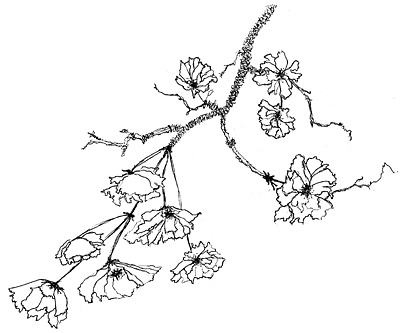All Nonfiction
- Bullying
- Books
- Academic
- Author Interviews
- Celebrity interviews
- College Articles
- College Essays
- Educator of the Year
- Heroes
- Interviews
- Memoir
- Personal Experience
- Sports
- Travel & Culture
All Opinions
- Bullying
- Current Events / Politics
- Discrimination
- Drugs / Alcohol / Smoking
- Entertainment / Celebrities
- Environment
- Love / Relationships
- Movies / Music / TV
- Pop Culture / Trends
- School / College
- Social Issues / Civics
- Spirituality / Religion
- Sports / Hobbies
All Hot Topics
- Bullying
- Community Service
- Environment
- Health
- Letters to the Editor
- Pride & Prejudice
- What Matters
- Back
Summer Guide
- Program Links
- Program Reviews
- Back
College Guide
- College Links
- College Reviews
- College Essays
- College Articles
- Back
Glister and Gold
First published in 1884, "The Necklace" is Guy de Maupassant’s most famous work of short fiction. As the story of a bourgeois beauty who longs for material wealth and position among the elite, it encapsulates the consumeristic ideals of the Belle Époque in the vain and avaricious character of Mathilde Loisel. Ultimately, it is Mathilde’s proud and shallow personality that brings about her downfall.
Mathilde’s monumental superficiality is one of the many aspects of her character that contributes to her downfall. Utterly unaware of everything but what she doesn’t have, she spends her days indulging in fantasies of spectacular wealth and bemoaning her middle-class status. Envisioning “silent antechambers heavy with Oriental tapestries...vast saloons hung with antique silks, (and) exquisite pieces of furniture supporting priceless ornaments,” she escapes from her disappointing life through her imagination. However, her materialistic daydreams only feed her discontent and make her even more dissatisfied.
Like her materialism, Mathilde’s pride sends her blindly stumbling down the path of financial ruin. As she tells her husband, she believes that “There’s nothing so humiliating as looking poor in the middle of a lot of rich women.” She refuses to wear flowers to the ball and insists she must have jewels, so she borrows an exquisite, seemingly precious diamond necklace from her rich friend. Ashamed of her shabby cloak, she rushes away from the party to avoid being seen by the wealthy ladies donning their costly furs. Determined to keep up the illusion of her affluence, she is thinking only of her vanity in what may well have been the moment when she lost the necklace and sealed her destiny. By the end of the story, her beauty has faded and whatever small luxuries she may have once enjoyed are gone, but Mathilde remains oblivious to the fact that it is her own character and her own actions, not the vagaries of fate, that are to be held accountable.
Despite the subsequent decade of hardship and privation, Mathilde’s memory of the ball is never dimmed. As her one moment of complete and unadulterated happiness, the recollection is something that she cherishes dearly. In her eyes, the years that followed were a price worth paying for the pleasure of that night. Unable to distinguish between the authentic and the artificial, she cannot recognize the worthlessness of the necklace nor the emptiness of the world it symbolizes. Hollow and conceited, her character dooms her to a life of self-inflicted misery and a fatal attraction to glister, rather than gold.

Similar Articles
JOIN THE DISCUSSION
This article has 0 comments.
